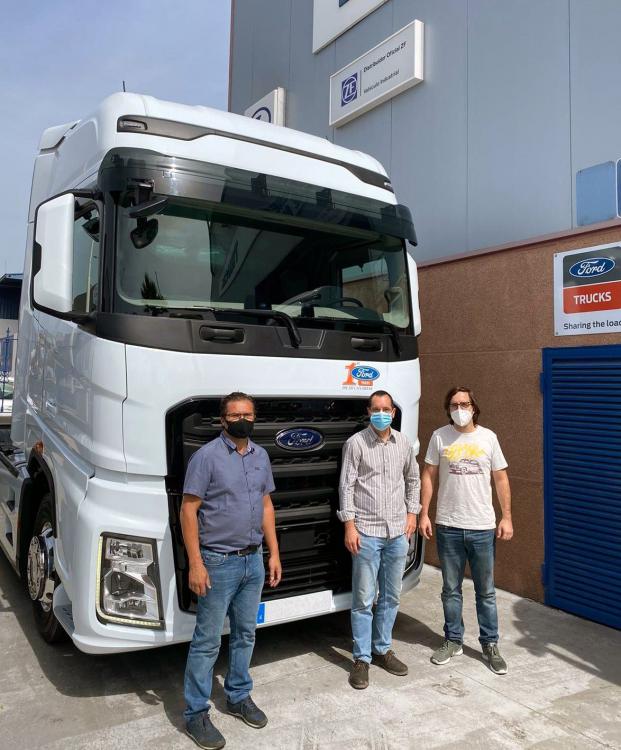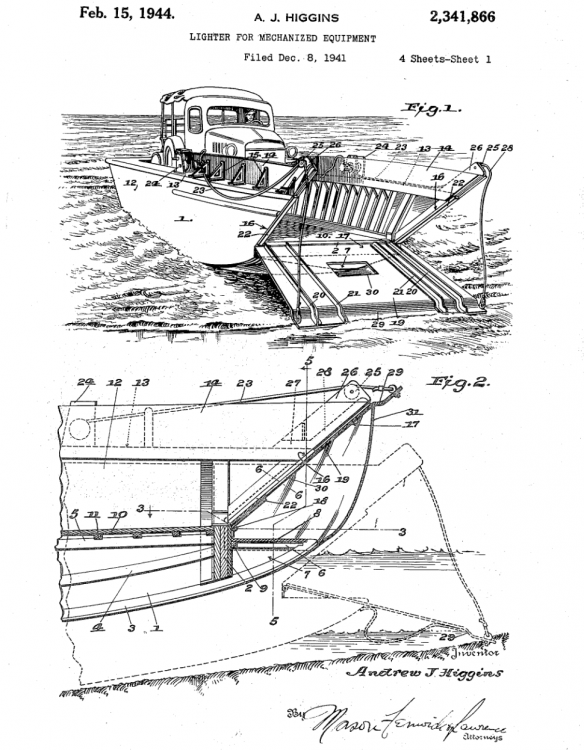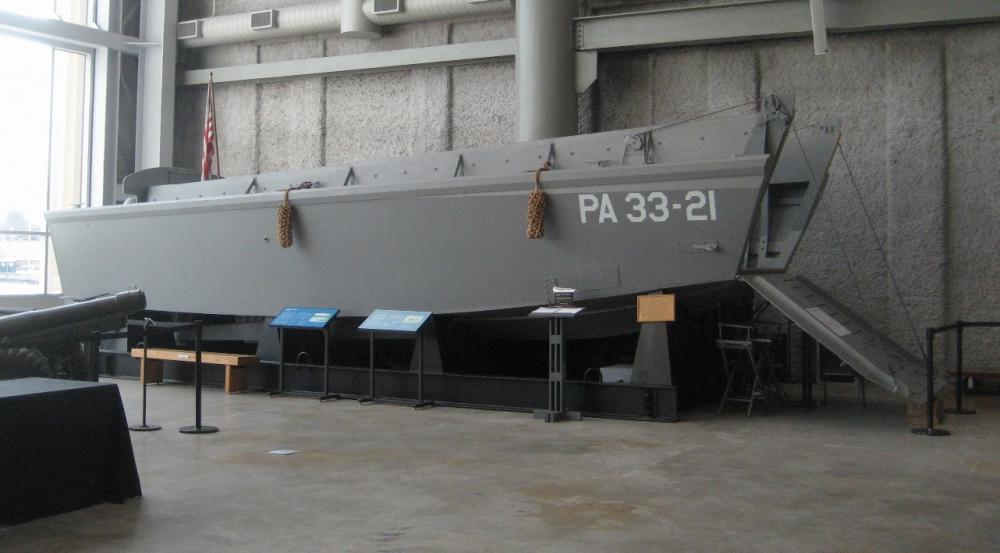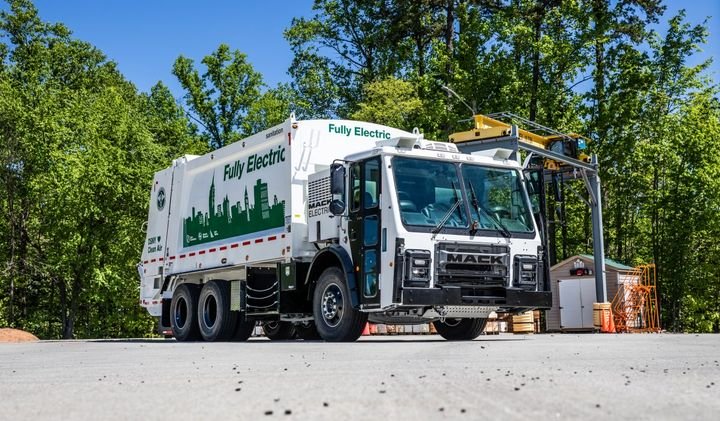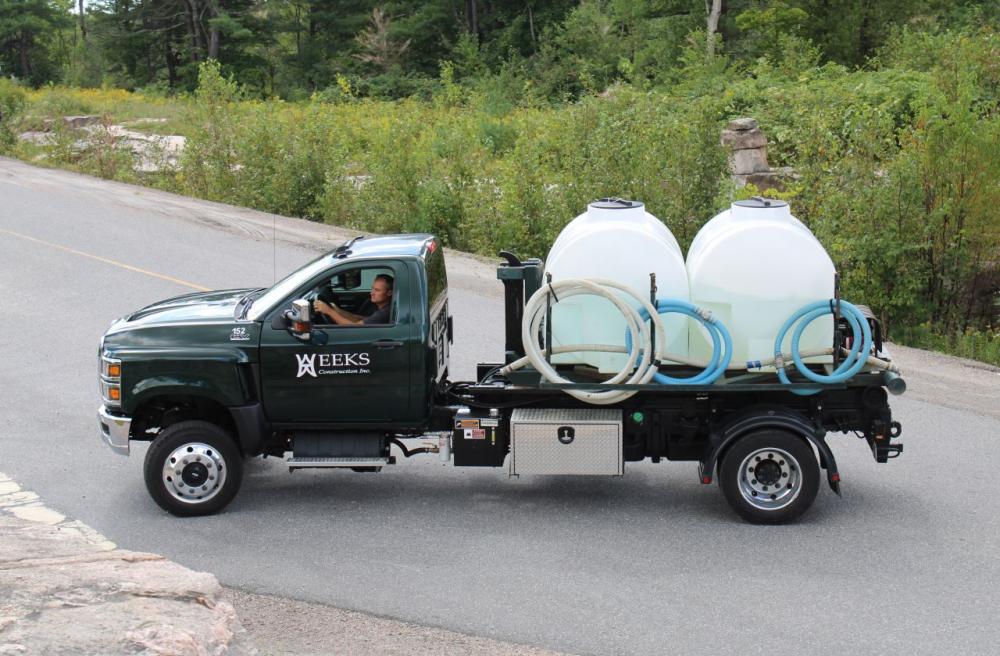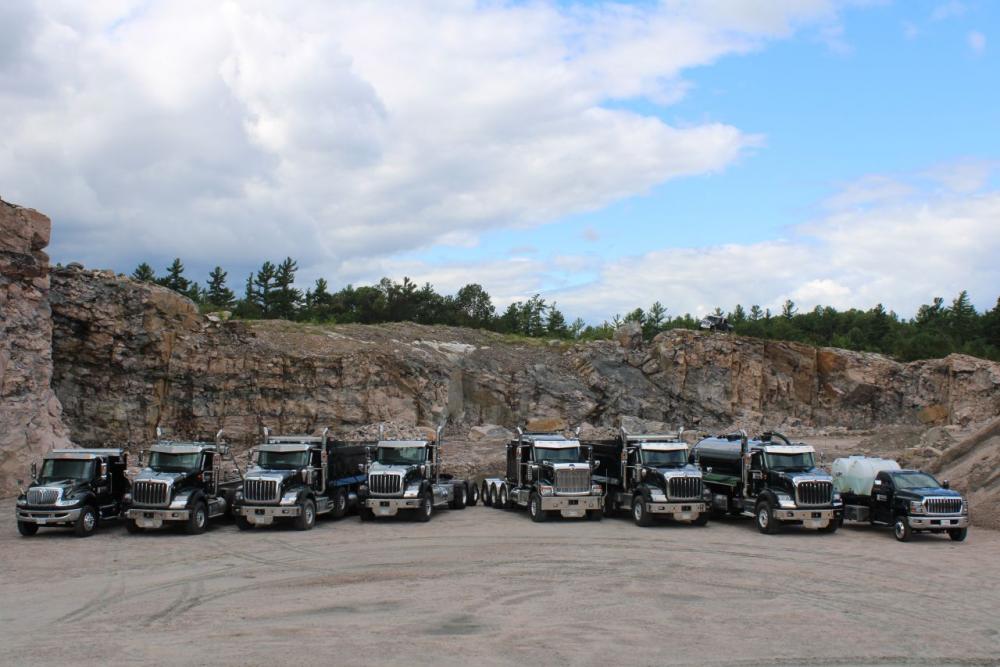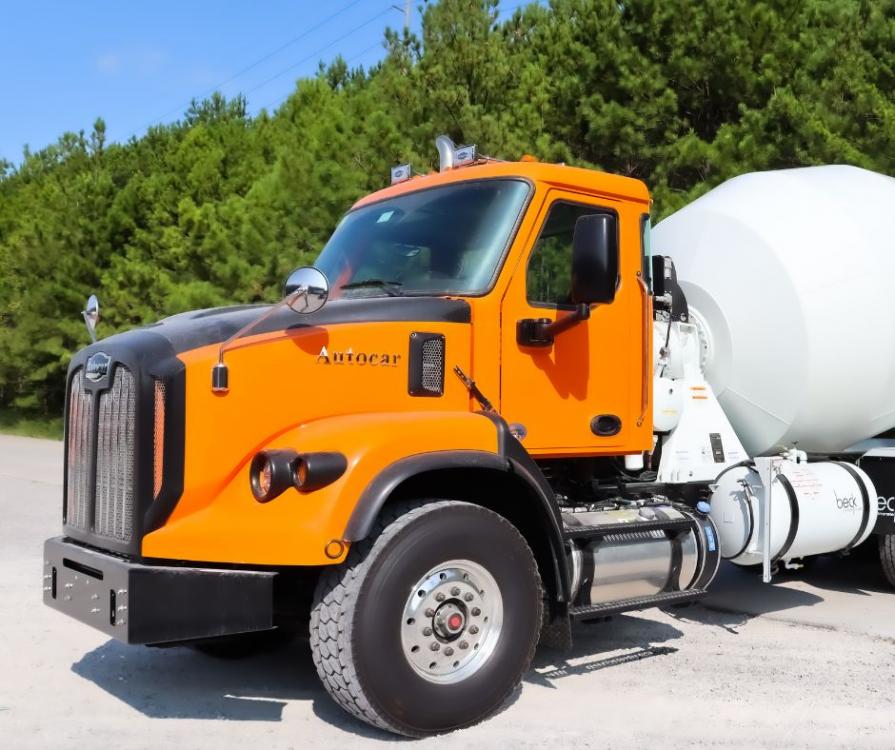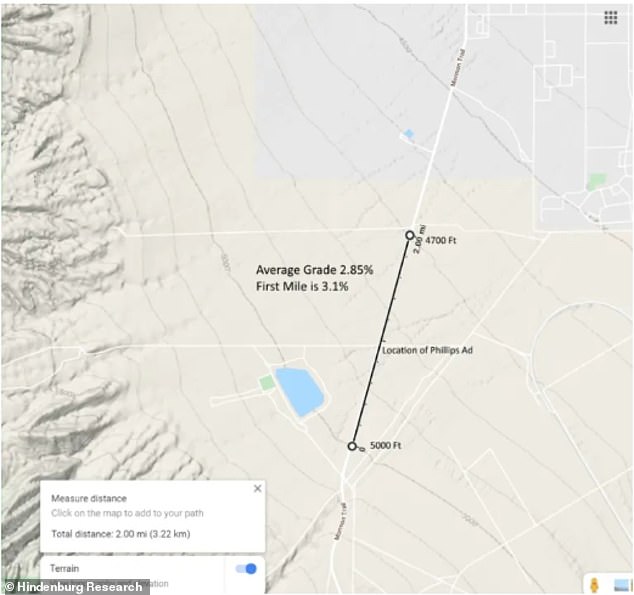
kscarbel2
Moderator-
Posts
18,927 -
Joined
-
Days Won
114
Content Type
Profiles
Forums
Gallery
Events
Blogs
BMT Wiki
Collections
Store
Everything posted by kscarbel2
-
Turbocharger maker Garrett files for Chapter 11 bankruptcy Reuters / September 21, 2020 Auto supplier Garrett Motion Inc. said Sunday it filed for Chapter 11 bankruptcy protection as it struggled with heavy debt amid the COVID-19 pandemic and a dispute with former parent Honeywell International Inc. over asbestos liabilities. Garrett Motion said it entered into a "stalking horse" purchase agreement with private equity firm KPS Capital Partners for $2.1 billion. The stalking horse agreement would imply that any other bids that come in must be higher than the offer made by KPS. The agreement is subject to court approval. Garrett Motion, which makes automotive turbochargers, said it's seeking court's approval for a $250 million debtor-in-possession financing facility. Throughout the reorganization process, Garrett Motion expects to operate without interruption. The company listed both assets and liabilities in the range of $1 billion and $10 billion, according to a filing with the U.S Bankruptcy Court for the Southern District of New York. Garrett Motion's largest customer is Ford Motor Co., which accounted for 12 percent of 2019 sales, according to its annual report. Automakers and suppliers have been hit by the coronavirus outbreak, which led to shuttered vehicle factories and disrupted supply chains. "...the financial strains of the heavy debt load and liabilities we inherited in the spin-off from Honeywell -- all exacerbated by COVID-19 -- have created a significant long-term burden on our business," CEO Olivier Rabiller said in a statement. The company has accused Honeywell of devising the spinoff of Garrett Motion, its transportation systems business, in late 2018 to offload Honeywell's liabilities related to asbestos-exposure claims. Honeywell said Garrett was pursuing a bankruptcy "to avoid the legitimate and reasonable financial commitments" the company assumed as part of its spinoff in 2018. "Garrett always has been capable of fulfilling those obligations with the assets it received in the spinoff," Honeywell said in a statement, adding that it was committed to engaging in a dialogue with the firm. Garrett Motion said expects to emerge from the Chapter 11 and complete the sale process in early 2021. Morgan Stanley and Perella Weinberg Partners served as financial advisers to Garrett Motion. Sullivan & Cromwell LLP and Quinn Emanuel Urquhart & Sullivan LLP were legal advisers. AlixPartners served as Garret Motion's restructuring adviser. Garrett Motion, tax domiciled in Rolle, Switzerland, saw 2019 sales of $3.25 billion.
-
MarketWatch / September 21, 2020 Dallas Fed President Rob Kaplan on Monday said the new Federal Reserve forward guidance could create “fragilities” and “excesses” in financial markets. Last week, the Fed promised to hold its policy rate close to 0% until inflation is on track to “moderately exceed” the central bank’s 2% target “for some time.” Kaplan and Minnesota Fed President Neel Kashkari both disagreed with the framing of this so-called forward guidance, which offers provides market participants some guidance about the futures path of interest rates. The Federal Open Market Committee earlier this month debuted its new forward guidance. Kashkari said the problem with the Fed’s new guidance is that it still holds on to the importance of the unknowable variable of a maximum sustainable job level. One reason for his opposition, Kaplan said, was it gives institutional investors a signal “you’re going to need to take more risks,” says Kaplan. “Excessive risk taking...can create fragilities and other excesses in the system which are hard to see in real time and easier to see in hindsight and can create issues for us,” said Kaplan. “I felt the costs were not worth the benefits,” he added. The Dallas Fed president said there wasn’t much benefit from announcing forward guidance last week because financial markets already believe the Fed will hold its policy rate steady for years.
-
Ford says F-150 EV will outwork the competition Michael Martinez, Automotive News / September 21, 2020 DETROIT — Unlike other upcoming electric pickups, the Ford F-150 EV isn't inspired by Blade Runner, doesn't have a hidden fridge and can't crab walk diagonally. But it will tow heavy trailers, produce more horsepower and torque than any previous F-150 and cost more than 40 percent less to operate than the current gasoline model, executives promise. Those are the attributes Ford Motor Co. believes matter most to the customers who have sustained the sales leadership streak of its F-Series pickup line since the year Jimmy Carter became president. And it's those attributes that Ford is touting as it prepares for one of the biggest changes to its most profitable product. "Simply put, this isn't a gimmick," incoming CEO Jim Farley said last week at an event celebrating construction of a facility in Michigan to build the F-150 EV starting in 2022. "It's a workhorse, not a show horse destined for a shiny garage filled with four other luxury cars." The messaging two years ahead of the vehicle's production is clear: Ford is attempting to convert loyal fleet operators and business owners to an EV by dispelling concerns about its cost or performance under load. Those buyers, Ford hopes, will help it fend off new competitors Rivian, Nikola and Tesla, as well as established rivals such as General Motors, that are preparing to launch electric pickups. The F-150 EV will be powered by dual electric motors that will produce more than the 450 hp and 510 pound-feet of torque generated by the most powerful version of today's gasoline-powered truck. In place of the engine, the EV will have a "giant" front trunk, executives say. And the truck will double as a mobile power generator, much like the hybrid variant that launches this year. "This is a really breakthrough product for us for the capability itself," Farley told Automotive News Publisher Jason Stein for the "Daily Drive" podcast for Monday, Sept. 21. "It will bring energy and electrons to the job site. It's so much more than a new-propulsion F-150. It's 'Built Ford Tough.' That will make us different in this market." Ford's strategy is a stark contrast to other automakers'. To be sure, rivals aren't ignoring performance and capability. GM, for example, said the GMC Hummer electric pickup, slated to be unveiled next month, will have multiple electric motors and numerous battery packs producing up to 1,000 hp and 11,500 pound-feet of torque. Startup Lordstown Motors is marketing the Endurance, an electric pickup due in 2021, toward fleet buyers. Lifestyle vehicles But most battery-powered pickups are being branded more as lifestyle vehicles. Tesla CEO Elon Musk told Automotive News last month that he conducted zero customer research for the upcoming Cybertruck, opting instead to make a vehicle "we thought was awesome and looks super weird." Rivian, a rival that Ford has invested in, will come out with the R1T pickup next year. The truck is marketed toward outdoor lovers, and the company says the interior was inspired by contemporary furniture as well as hiking and outdoor gear. That gives Ford an opening to make a business case with its longtime work-oriented base. "It's a very natural fit and very much in alignment with the company's past and the way they serve their customers," Stephanie Brinley, principal automotive analyst with IHS Markit, told Automotive News. "It makes sense for Ford to stick with what they know and what they're respected for." Cost has long been a deterrent to EV ownership, but Ford is attempting to downplay a potentially high sticker price by touting lower lifetime operational costs. The automaker last week said the F-150 EV will have significantly lower operating costs compared with the gasoline version, in large part from reduced maintenance. In addition to never needing gas or oil, the truck will save companies money by being out of service less often, Ford said. "The consumer wants this," said Angela Pritchard Spiteri, COO of Pritchard Family Auto Stores in Iowa and a member of Ford's commercial vehicle advisory board. Spiteri said her fleet buyers are becoming more mindful of their environmental footprint and are intrigued by the potential for lower operating costs. "It's different than previous alternative fuel solutions," she said. "It's something that's going to stick." Part of that newfound interest revolves around data. Ford has promised the F-150 EV can be continually improved via over-the-air software updates. In addition, Spiteri said, fleet operators can take advantage of telematics software within the vehicle to unlock more savings. "That data can be measured, and those measurements can be utilized to truly measure that cost and find driving efficiencies," she said. ‘Distinct' styling Ford plans to build the F-150 EV at its Dearborn Truck Plant in Michigan. The automaker is investing $700 million on a new assembly facility at the site to accommodate the new propulsion system. Gary Johnson, Ford's chief manufacturing and labor affairs officer, said it would be the company's "most technologically advanced plant in the world" and be flexible enough to accommodate additional vehicle lines. Johnson declined to say what the annual production capacity would be. He said F-150 EVs would go through the same paint and body shops as the gas-powered models before moving to the new building. Kumar Galhotra, Ford's president of the Americas and International Markets Group, said the F-150 EV would look "distinct" but might not have the bold look of products such as the Cybertruck. A teaser image released last week hinted at a more rectangular "grille," with an LED light running horizontally across the front of the vehicle connecting each headlamp. "The silhouette for that segment is evolving, and other people are testing some extremes," Galhotra said. "Our vehicle will be different, but it's not going to be the Mad Max vehicle. It will clearly be an evolution that signifies it's electric. It will be an aesthetic that's true to Ford truck DNA."
-
Nikola Founder Trevor Milton Resigns as Executive Chairman Amid Fraud Allegations The Wall Street Journal / September 21, 2020 Nikola Corp. founder and Executive Chairman Trevor Milton is stepping down from the electric-truck startup with immediate effect in the wake of allegations from a short seller that he and the company had made false statements to investors. The company said Mr. Milton would be replaced by Stephen Girsky, a former General Motors Co. executive who already sits on the truck company’s board. Nikola has come under scrutiny since short seller Hindenburg Research released a report earlier this month accusing the company and Mr. Milton of making exaggerated claims about the readiness of Nikola’s technology and how much of it is proprietary. Doubts about the company’s readiness to produce vehicles and questions about its claim to own proprietary technology have prompted U.S. securities regulators and the Justice Department to investigate whether Nikola misled investors.
-
Is this from a Mack?
kscarbel2 replied to Searcyfarms's topic in Antique and Classic Mack Trucks General Discussion
https://www.bigmacktrucks.com/topic/33173-vintage-mack-radiator-capand-by-vintage-i-mean-friggin-old/ -
Ford Trucks Spain / September 18, 2020 Ford Trucks is very proud of our new Canary Islands dealership, Grupo Roque Nublo, who has delivered its first F-Max to the company Aguas Friland. It's exciting to have the first Ford heavy truck rolling down Canary Islands' roads! Thank you for your trust in Ford Trucks! .
-
David Kindy, Smithsonian Magazine / September 18, 2020 Patented in 1944, the Higgins boat gave the Allies the advantage in amphibious assaults. Thousands of flat-bottomed boats plowed through rough seas under cold gray skies. The smell of diesel fumes and vomit was overwhelming as the small vessels lurched toward the beaches. Waves slapped hard against the plywood hulls while bullets pinged off the flat steel bows. Frightened men in uniform hunkered down beneath the gunwales to avoid the continuous enemy fire. Suddenly, they heard the sound of the keels grinding against sand and stone. Heavy iron ramps dropped into the surf and the men surged forward into the cold water toward an uncertain fate. It was 6:28 a.m. on June 6, 1944, and the first LCVPs – Landing Craft, Vehicle and Personnel – had just come ashore on Utah Beach at Normandy. D-Day and the Allied invasion of Europe had commenced. Less than four months earlier, the patent was issued for those very boats. Andrew Jackson Higgins had filed his idea with the U.S. Patent Office on December 8, 1941 – the day after the Japanese attacked Pearl Harbor. Now these 36-foot LCVPs – also known as Higgins boats – were being manufactured in the thousands to help American soldiers, marines and seamen attack the enemy through amphibious assaults. Higgins’ creation had a dramatic impact on the outcome of the Normandy landings 75 years ago, as well as many other naval operations in World War II. The vessel’s unique design coupled with the inventor’s dogged determination to succeed may very well have swung the balance of victory to within grasp of the Allies. At least, that’s what President Dwight D. Eisenhower believed. “Andrew Higgins is the man who won the war for us,” he told author Stephen Ambrose in a 1964 interview. “His genius was problem-solving,” says Joshua Schick, a curator at the National World War II Museum in New Orleans, which opened a D-Day exhibit in 2019 featuring a full-scale recreation of a Higgins boat. “Higgins applied it to everything in his life: politics, dealing with unions, acquiring workers, producing fantastical things or huge amounts of things. That was his essence.” Higgins, a Nebraska native who established himself as a successful lumber businessman in New Orleans, began building boats in the 1930s. He concentrated on flat-bottomed vessels to meet the needs of his customers, who plied the shallow waters in and around the Mississippi River delta. He constantly tinkered with the concept as he sought to improve his boats to better match the ideal in his own mind of what these boats should be. During the Prohibition era, Higgins had a contract with the U.S. Coast Guard to build fast boats for chasing after rum runners. There are rumors that he then went to the rum runners and offered to sell them even faster boats. Schick doesn’t come right out and confirm the stories, but he doesn’t deny them either. “That stuff is always fun to smile and chuckle about, but no one ever keeps a record saying that’s what they did,” he diplomatically states. Higgins’ innovative spirit enabled a series of breakthroughs that led to the eventual design that became his namesake boat. First was the spoonbill bow that curled up near the ramp, forcing water underneath and enabling the craft to push up on to the shore and then back away after offloading. A ridge was later added to the keel, which improved stability. Then, a V-shaped keel was created and that allowed the boat to ride higher in the water. “There was no task Higgins couldn’t do,” Schick says. “He would find a way to do something, then find a way to do it better.” Higgins started making landing craft for the Navy when World War II began. He built a 30-footer, the Landing Craft Personnel (LCP), based on government specifications but he insisted a larger boat would perform better. The Navy relented and he came up with a 36-foot version, the Landing Craft Personnel Large (LCPL), that would become the standard for the rest of the war. The Marines weren’t completely satisfied with this boat, though. The design required personnel and equipment to be offloaded by going over the side. In 1942, the Marines requested a ramp be added to the front of the vessel for faster egress. “Higgins takes the LCPL, cuts the bow off, puts a ramp on it and then it becomes the LCVP, which becomes the famous Higgins Boat,” Schick says. That landing craft, often referred to as “the boat that won World War II,” could quickly carry up to 36 men from transport ships to the beaches. It also could haul a Willys Jeep, small truck or other equipment with fewer troops. Higgins’ earlier modifications along with an ingenious protected propeller system built into the hull enabled the boats to maneuver in only 10 inches of water. This version became the basis for a variety of designs and different configurations during World War II. LCA (Landing Craft Assault), LCM (Landing Craft Mechanized), LCU (Landing Craft Utility), LCT (Landing Craft Tank) and other models followed the same fundamental style, all built by Higgins or under license with his company, Higgins Industries. Higgins was named on 18 patents, most of which were for his boats or different design adaptations to the vessels. At the height of World War II, Higgins Industries was the largest employer in the New Orleans area. More than 20,000 whites, blacks, women, elderly and handicapped people worked at seven plants in one of the first modern integrated workplaces in America. They produced a variety of landing craft in different shapes and sizes, PT boats, supply vessels and other specialized boats for the war effort. Higgins developed a reputation for being able to do the impossible. Once, the Navy asked him if he could come up with plans for a new boat design in three days. “Hell,” he replied. “I can build the boat in three days.” And that is exactly what he did. “The man was all about efficiency and getting things done,” Schick says. “The Navy began to realize that if there was an impossible task, just give it to Higgins and he’ll do it.” The secret to Higgins success may have been his personality. He was driven to succeed and never let barriers slow him down. He often bulled his way through or over bureaucratic quagmires, labor difficulties, material shortages and negative-thinking people with a brusk attitude and a few salty words. “As long as Higgins was the one in charge and didn’t have to rely on other people, he could bust through any obstacle that came in his way,” Schick says. “That attitude of determination and hard work helped him solve just about any issue.” The Higgins Boat saw action in many amphibious landings throughout World War II. In addition to Normandy, they were used in Sicily, Anzio, Tarawa, Iwo Jima, Saipan, Okinawa, Peleliu and countless other beaches in the European and Pacific theaters of operation. More than 20,000 of the Higgins-designed landing craft were made from 1942 to 1945, but fewer than 20 remain today. To commemorate D-Day, one of the surviving Higgins boats is on display, through July 27, in the gardens outside of the U.S. Patent and Trademark Office headquarters and National Inventors Hall of Fame Museum in Alexandria, Virginia. Their legacy cannot be understated. They changed the course of the war and provided the Allies with an ability to strike anywhere with speed and effectiveness – all because of the incredible pluck of the inventor, who was inducted into the National Inventors Hall of Fame this year. “Higgins was a man ahead of his time,” Schick says. “He had attitude and determination. He knew how to lead and organize. He surrounded himself with smart people and knew how to get the most out of them. He was a strong-minded man.” .
-
So Bob, users are going to spill AdBlue (DEF) all over the right fender. Poor design.
-
Ford says electric F-150 cost of operations will be nearly half of gasoline truck Michael Martinez, Automotive News / September 18, 2020 DETROIT — Ford Motor Co. executives say the upcoming battery-electric F-150 will be cheaper to operate and more powerful than the current gasoline-powered pickup, addressing two common concerns around electric vehicle ownership two years ahead of its debut. While the company wouldn't provide specific figures, Kumar Galhotra, Ford's president of the Americas and International Markets Group, said the lifetime cost of operations, which excludes the purchase price, of the electric F-150 will be roughly half that of the current-generation vehicle. The lower estimate is based off zero gas and oil usage, low electric charging rates, lower maintenance costs and increased vehicle uptime, Ford said. In addition, Galhotra said the F-150 EV, due to start production in mid-2022, will boast the fastest 0-to-60-mph time and produce the most torque and horsepower in the nameplate's history. In the absence of an engine, Galhotra also promised a "giant" front trunk, which would mark the first time the F-150 offers significant enclosed storage space. The new details are part of Ford's effort to position the F-150 EV as a purpose-built work vehicle that can provide numerous benefits to fleet operators as well as traditional retail customers. The automaker has long been the leader in the lucrative full-size pickup market but will face increased competition from EV makers Tesla, Rivian, Nikola and others in the coming years. "While other electric pickups are competing for lifestyle customers, the all-electric F-150 was designed and engineered for hardworking customers that need a truck to do a job," Galhotra told reporters ahead of an event announcing a standalone assembly facility for the vehicle. EV building Ford said Thursday that it plans to invest $700 million on a 500,000-square-foot building under construction at the historic Rouge complex in suburban Detroit that includes the Dearborn Truck Plant. The automaker agreed to the investment in its 2019 contract with the UAW. As part of the project, Ford will hire 300 workers to support battery assembly and production of the F-150 hybrid and EV. Ford says the facility is scheduled to be completed next summer. Gary Johnson, Ford's chief manufacturing and labor affairs officer, said it would be the company's "most technologically advanced plant in the world." Johnson declined to say what the site's annual production capacity would be. He said F-150 EVs would go through the same paint and body shops as the gas-powered models before moving to the new building. Galhotra promised the F-150 EV would look "distinct" from the gas-powered model but did not provide specifics. Ford has said for years that it planned to build electrified versions of the F-150 in Dearborn. Bloomberg last month reported Ford's plans to use a standalone facility within the Rouge. New ad campaign As part of the Thursday announcement, Ford officially kicked off production of the redesigned 2021 F-150 and launched a new "Built for America" ad campaign touting the company's contributions to the country. The TV spots highlight the fact that Ford employs more workers and builds more vehicles in the U.S. than any other automaker — facts it has been quick to point out amid calls by the Trump administration for more manufacturing investment within the country. The spots were produced by agency Wieden and Kennedy, which Ford first brought on for creative work in 2018 and used for its "Built Ford Proud" campaign. The automaker also released new details from a Boston Consulting Group study it commissioned about the economic impact of its F-Series pickup line. According to the study, the F-Series generated $42 billion in revenue in 2019, more than McDonald's, Coca-Cola, Nike and John Deere. That's 27 percent of Ford's total revenue last year. The F-Series is the most popular vehicle line in 39 states and accounts for 6.6 percent — 16.6 million — of all vehicles currently on the road in the U.S.
-
Volvo puts the Mack LR electric refuse truck into production
kscarbel2 replied to kscarbel2's topic in Trucking News
The LR's Volvo powertrain is borrowed from the FE/FL electrics. . -
Heavy Duty Trucking (HDT) / September 17, 2020 Volvo Group announced plans to commercialize the Mack LR Electric, its refuse model equipped with a fully electric integrated Volvo electric drivetrain. Orders for the Mack LR Electric will open in fourt-quarter of 2020, with deliveries beginning in 2021. “Mack’s leadership in the refuse segment goes back more than a century, and we’re pleased to build on that heritage today by announcing the commercialization of the LR Electric model,” said Martin Weissburg, president, Mack Trucks. “This clean, quiet and powerful truck demonstrates the very best of Mack innovation and our people, and I couldn’t be more proud to announce our plans to build it.” The production Mack LR Electric model will fulfill the needs of refuse customers, whether commercial or municipal, seeking a zero-emissions truck that aligns with their environmental goals and local emissions regulations. With its quiet operation, the LR Electric will meet the needs of customers working in an urban setting who are seeking to cut noise pollution and operate quietly at night, according to Mack. Introduced as a prototype in 2018, the LR Electric features Volvo Group’s fully integrated electric powertrain with twin electric motors and four NMC lithium-ion batteries providing vehicle propulsion, as well as power for all onboard accessories. A three-mode regenerative braking system takes into account the truck’s increasing load and helps recapture energy from the hundreds of stops refuse trucks make per day. The LR Electric models will feature a copper Bulldog mounted on the front of each truck. Minimal changes to the gauges and select switchgear were made, allowing Mack to carry over the standard LR cab. The LR Electric will be monitored by Mack GuardDog Connect, a proactive telematics solution that monitors vehicle performance to help customers avoid unplanned downtime. LR Electric-focused service training and electrical safety curriculum will also be shared with the Mack dealer network to ensure customers receive the level of support they’ve come to expect from Volvo Group. .
-
Hino missed on the engine emissions calibrations. True story. So.........production has been delayed all this time. They've kept a lid on their embarrassing situation.
-
Ford to expand its largest factory to make electric pickup trucks The Wall Street Journal / September 17, 2020 Ford Motor Co. is expanding its largest and oldest factory to make electric pickup trucks, a high-profile manufacturing investment in a key battleground state where jobs remain a focus on the campaign trail. Ford will spend about $700 million to expand its River Rouge plant, adding 300 jobs at the sprawling, century-old complex a few miles from the company’s Dearborn, Michigan, headquarters, the company said Thursday. By mid-2022, Ford will begin making battery-powered versions of the F-150 pickup, its flagship vehicle and major source of its bottom line.
-
International Trucks Press Release / September 17, 2020 This third-generation owner operator has an eye for detail and a passion for excellence! Weeks Construction is a family owned business, swipe to see their family lineup! .
-
Scania Group Press Release / September 15, 2020 Scania has now revealed its first range of electric trucks. This is a milestone in its aim to be leading in the transition to a sustainable transport system. The high-performance plug-in hybrid and fully electric trucks initially focus on urban applications, including distribution to retailers. “It is with a great deal of pride that we announce the start of Scania’s long-term electrification commitment,” says Scania’s President and CEO Henrik Henriksson. “We will over the coming years annually launch electric vehicles for the entire product range and we are presently reorganising our production towards that end. Of particular significance is that we will in a few years’ time, also introduce long-distance electric trucks adapted for fast charging during drivers’ compulsory 45-minute rest periods.” Read more at scania.com/electrification .
-
Autocar Trucks Press Release / September 15, 2020 Another #Autocar DC64 ready to get to work! #AlwaysUp
-
Financial Times / September 16, 2020 Jeff Ubben, the founder of activist hedge fund ValueAct and an early investor in Nikola, has strenuously defended the electric truck start-up and its leadership against fraud allegations from a short-seller. Mr Ubben, who sits on Nikola’s board of directors, says the company and its founder Trevor Milton were misunderstood. He said Nikola could revolutionise transport and compared it to Apple. In a scathing report released last week, short-seller Hindenburg Research called Nikola “an intricate fraud” and claimed the company was exaggerating progress on its potentially revolutionary technology. “Nikola is a prototype shop,” Mr Ubben said. “You have the biggest company in the world which is a prototype shop and it’s called Apple. That is what we are doing. We are not trying to sell trucks, we are trying to sell hydrogen.” Mr Ubben recently left ValueAct, taking with him an environment-focused investment fund that he now runs at a new firm called Inclusive Capital Partners. That fund has an investment in Nikola. Mr Ubben sold more than half the Nikola stake in late August and he now has 5 per cent of the company, versus 12 per cent before. The sale was forced on him by investor redemptions during the transition from ValueAct, he said. Nikola is currently developing a hydrogen cell battery, he said, but the real profit will come from hydrogen stations, which he said were about seven or eight years away. The bulk of Nikola’s value lies in that hydrogen network, he said, not the trucks itself. “We are different from Tesla. They are going to make their money on cars and trucks. That’s a tough model. We will be selling fuel to all the other hydrogen vehicles. It is the end game solution,” Mr Ubben said.
-
DOJ Investigates Electric Truck Startup Nikola The Wall Street Journal / September 15, 2020 The Department of Justice has joined U.S. securities regulators in examining allegations that electric-truck startup Nikola Corp. misled investors by making exaggerated claims about its technology. The Justice Department’s inquiry is being handled by the Manhattan U.S. attorney’s office, working in concert with the Securities and Exchange Commission, which has initiated its own examination of the claims about Nikola.
-
With the exception of the experimental PT boats, all U.S. PT boats were powered by three marine modified derivations of the Packard 3A-2500 V-12 liquid-cooled, gasoline-fueled aircraft engine. Improvements upon Packard's World War I Liberty L-12 2A engine, the successive "M" for "marine" designated 3M-2500, 4M-2500, and 5M-2500 generations all featured slight changes and more power. Their superchargers, intercoolers, dual magnetos, and two spark plugs per cylinder reflected their aircraft origins. Packard's licensed manufacture of the famed Rolls-Royce Merlin aircraft engine alongside the marine 4M-2500 has long been a source of confusion. Only the British built PT-9 prototype boat brought from England for Elco to examine and copy featured a Merlin. https://en.wikipedia.org/wiki/PT_boat
-
2021 Ford Bronco Won't Ever Come with a V-8 Connor Hoffman, Car & Driver / September 14, 2020 Bronco chief engineer Eric Loeffler says Ford will never offer a V-8 in the new Bronco. Loeffler claims that even if Ford wanted to put, for example, the 5.0-liter V-8 in the Bronco, emissions regulations wouldn't allow it. He says that Ford is also confident the Bronco's existing engine options will satisfy customers' needs. Currently, the Bronco can be had with either a turbocharged 2.3-liter inline-four that's projected to produce 270 horsepower and 310 lb-ft of torque or an optional twin-turbocharged 2.7-liter V-6 that'll make 310 horsepower and 400 lb-ft of torque. Separately, there are rumors of a more capable Bronco Raptor which, like the F-150 Raptor, could use a more powerful EcoBoost V-6, and Ford has confirmed that, as with the Wrangler, there will be a hybrid powertrain as well.
-
Nikola's truck was not powering through the Utah countryside, propelled by its next-generation electric vehicle technology. In fact, the unpowered truck was pushed down a hill. . .
-
Nikola/Hindenberg: gravitational spin Jamie Powell, Financial Times / September 16, 2020 In a year of remarkable market stories, one of the most remarkable emerged last Thursday when short selling research firm Hindenberg took aim at $13bn electric vehicle bubble stock, and recent GM partner, Nikola. Nikola’s shares plummeted, prompting the company’s paper-billionaire founder and private jet enthusiast Trevor Milton to promise a full rebuttal of Hindenberg’s allegations before market open Friday. It never came. Instead we got a short statement from Nikola that it refutes the allegations, and had retained Kirkland & Ellis as its legal rottweiler against the evil shorty. That changed Monday morning as Nikola, a day late and several billion bucks short, published its full response. Now arguably the most amusing allegation in the Hindenberg report was that the born-of-Spac Tesla-knock-off faked a promotional video back in 2018. The clip showed one of Nikola’s trucks powering through the Utah countryside, seemingly propelled by its next-generation electric vehicle technology. In fact, as the FT confirmed, the truck was simply rolling down a very gentle hill. Newton would have been a better name for the company than Nikola, it seems. So we were keen to see how Nikola would spin this revelation in its response, and we weren’t disappointed (emphasis ours): Short Seller Distorts Nikola One 2017 Third Party “Future of Transportation” Promotion Video and Creates a Popular Lie: Hindenburg seeks to portray Nikola as misrepresenting the capabilities of the Nikola One prototype in a 2017 video produced by a third party, as “simply filmed rolling down a big hill.” Nikola never stated its truck was driving under its own propulsion in the video, although the truck was designed to do just that (as described in previous point). The truck was showcased and filmed by a third party for a commercial. Nikola described this third-party video on the Company’s social media as “In Motion.” It was never described as “under its own propulsion” or “powertrain driven.” Nikola investors who invested during this period, in which the Company was privately held, knew the technical capability of the Nikola One at the time of their investment. This three-year-old video of a Nikola prototype is irrelevant except for the fact that the short seller is trying to use it for its main thesis. The fact is, Nikola has real working hydrogen fuel-cell powered semi-trucks. Any reports intended to suggest that Nikola’s trucks do not drive are erroneous, and recent videos of Nikola vehicles driving can be found here. Gravitational forces, it seems, are also beginning to exert themselves on the stock. At pixel, Nikola’s shares are off 7.2 per cent in pre-market trading to $29.81, after jumping to reach the low $50s on the back of the General Motors announcement last Tuesday. What a difference a week makes eh?
BigMackTrucks.com
BigMackTrucks.com is a support forum for antique, classic and modern Mack Trucks! The forum is owned and maintained by Watt's Truck Center, Inc. an independent, full service Mack dealer. The forums are not affiliated with Mack Trucks, Inc.
Our Vendors and Advertisers
Thank you for your support!


